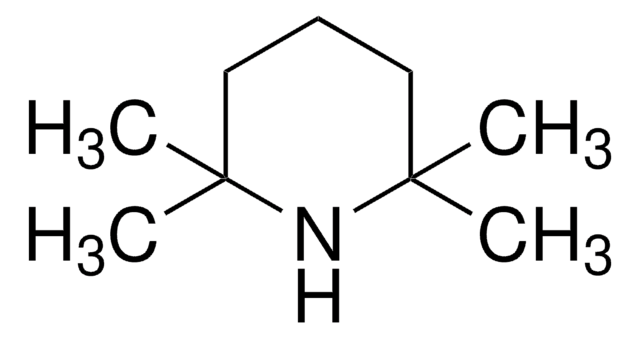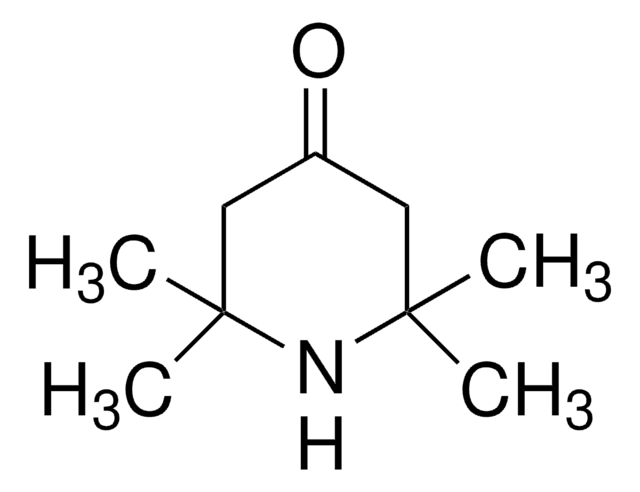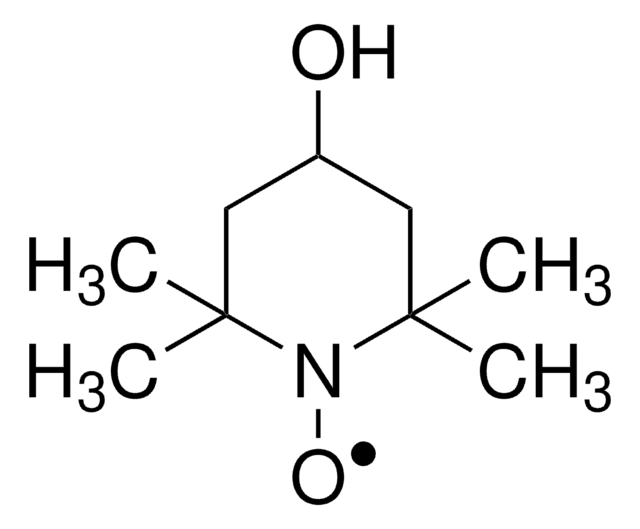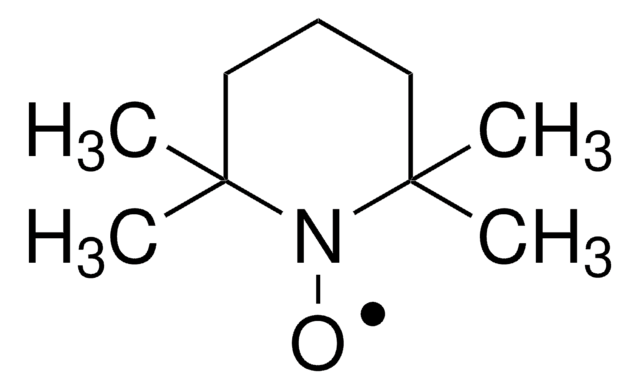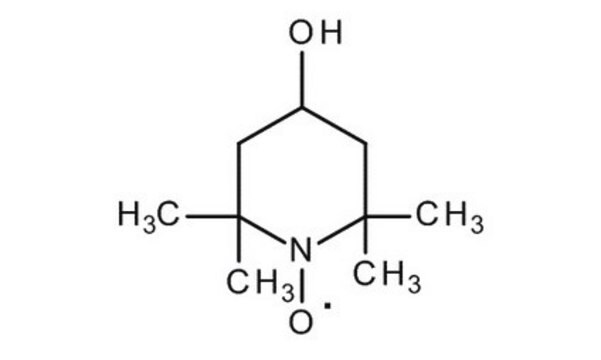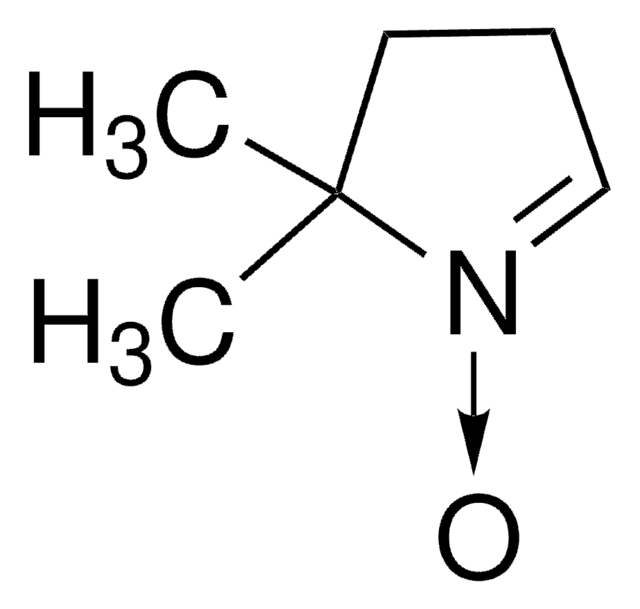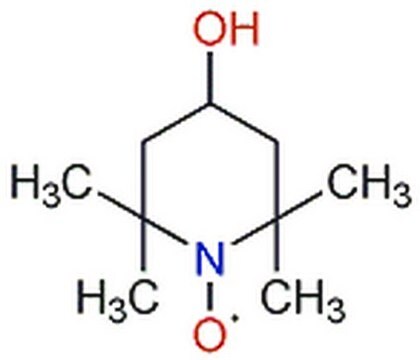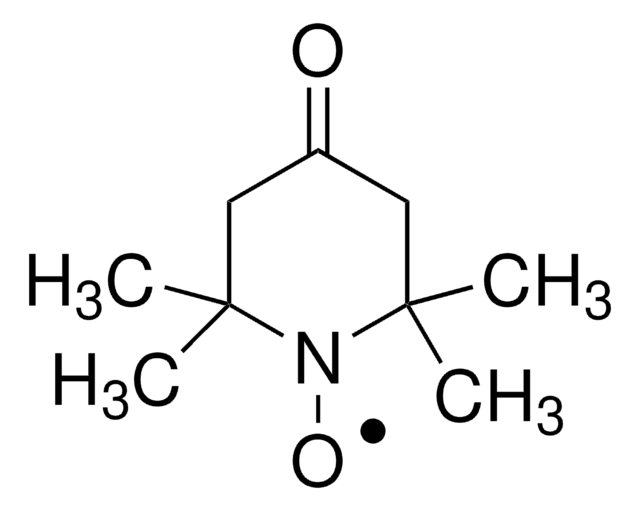115746
2,2,6,6-Tetramethyl-4-piperidinol
98%
Synonym(s):
4-Hydroxy-2,2,6,6-tetramethylpiperidine
Sign Into View Organizational & Contract Pricing
All Photos(2)
About This Item
Empirical Formula (Hill Notation):
C9H19NO
CAS Number:
Molecular Weight:
157.25
Beilstein:
105039
EC Number:
MDL number:
UNSPSC Code:
12352100
PubChem Substance ID:
NACRES:
NA.22
Recommended Products
Quality Level
Assay
98%
bp
212-215 °C (lit.)
mp
129-131 °C (lit.)
functional group
hydroxyl
SMILES string
CC1(C)CC(O)CC(C)(C)N1
InChI
1S/C9H19NO/c1-8(2)5-7(11)6-9(3,4)10-8/h7,10-11H,5-6H2,1-4H3
InChI key
VDVUCLWJZJHFAV-UHFFFAOYSA-N
Looking for similar products? Visit Product Comparison Guide
Application
2,2,6,6-Tetramethyl-4-piperidinol has been used to study the green and efficient method for chemoselective deoxidization of graphene oxide via the ultraviolet irradiation.
2,2,6,6-tetramethyl-4-piperidinol has been used to study the irradiation of Camptothecin (CPT) in aerated dimethylsulfoxide (DMSO) solution that leads to formation of singlet oxygen.
Used as:
- An additive for polymer modified hindered amine light stabilizers
- A light stabilizer for polyamide 66 fibers containing acid blue dyes
Signal Word
Danger
Hazard Statements
Precautionary Statements
Hazard Classifications
Skin Corr. 1B - Skin Sens. 1
Storage Class Code
8A - Combustible corrosive hazardous materials
WGK
WGK 1
Personal Protective Equipment
dust mask type N95 (US), Eyeshields, Gloves
Choose from one of the most recent versions:
Already Own This Product?
Find documentation for the products that you have recently purchased in the Document Library.
Customers Also Viewed
Kouichi Nakagawa et al.
Journal of oleo science, 66(3), 315-319 (2017-02-14)
This study investigated the location and distribution of paramagnetic species in apple seeds using electron paramagnetic resonance (EPR) and X-band (9 GHz) EPR imaging (EPRI). EPR primarily detected two paramagnetic species per measured seed. These two different radical species were
Shishu Zhu et al.
Environmental science & technology, 53(1), 307-315 (2018-11-28)
Minerals and transitional metal oxides of earth-abundant elements are desirable catalysts for in situ chemical oxidation in environmental remediation. However, catalytic activation of peroxydisulfate (PDS) by manganese oxides was barely investigated. In this study, one-dimension manganese dioxides (α- and β-MnO2)
Kouichi Nakagawa et al.
Journal of oleo science, 66(12), 1375-1379 (2017-12-05)
We investigated stable organic radicals formed in response to cold stratification in 'Fuji' apple seeds using X-band (9 GHz) electron paramagnetic resonance (EPR) technique. This technique primarily detected two paramagnetic species in each seed. These two different radical species were
Hiroyo Ikai et al.
PloS one, 8(11), e81316-e81316 (2013-11-28)
The purpose of the present study was to evaluate the risk of inducing bacterial resistance to disinfection treatment with photolysis of H2O2 and comparing this with existing antibacterial agents. We tested seven antibacterial agents, including amoxicillin, cefepime hydrochloride, erythromycin, ofloxacin
T Matsuhashi et al.
Toxicology letters, 86(1), 47-54 (1996-07-01)
Correlation between chloramphenicol-induced formation of megamitochondria in the mouse liver and oxidative stress was studied by lipid peroxidation analysis and electron microscopic technique. Chloramphenicol suppressed increases in the body weight and liver weight of experimental animals and at the same
Our team of scientists has experience in all areas of research including Life Science, Material Science, Chemical Synthesis, Chromatography, Analytical and many others.
Contact Technical Service